Customs Glossary Guide
Appearance
| This article is part of the Customs Compliance Guide and the Customs Glossary Guide |
A glossary of customs terms and acronyms used in cross-border trade and BorderConnect.
A

- A49
- An A49 Automotive Release shipment release type for goods entering Canada. Used in ACI for shipping production automotive parts to Chrysler, Ford and GM.
- A8A
- A8A In-Bond Cargo Control Documents are primarily used to clear auxiliary and special shipment types with CBSA including In-Bonds.
- ACE
- The Automated Commercial Environment (ACE) is a CBP (U.S. Customs and Border Protection) electronic system designed to facilitate trade and strengthen border security.
- ACE ID
- A unique identification number used to indicate a driver, truck or trailer within CBP ACE system.
- ACE In-Bond
- An ACE In-Bond created as part of an ACE eManifest declaration. (As opposed to an In-Bond created by a customs broker submitting the Bond information using ABI or ACS.
- ACI
- Advance Commercial Information is a CBSA (Canada Border Services Agency) program designed to provide officers with electronic pre-arrival information related to commercial goods before they arrive in Canada.
- Air Freight
- freight that’s shipped at least partially by air.
- Air Waybill
- An Air Waybill (AWB) is a document that accompanies goods shipped by an international courier, which allow for tracking. It serves as a receipt of goods by an airline, as well as a contract of carriage between the shipper and the carrier.
- AMPS
- An Administrative Monetary Penalty System (AMPS) is a a civil penalty regime that secures compliance with customs legislation through the application of monetary penalties.
- API
- An application programming interface (API) is a set of subroutine definitions, protocols, and tools for building software and applications. BorderConnect API provides an easy way to exchange eManifest related data to other software.
- Audit
- a safety audit is a review of a motor carrier’s records by the DOT in order to verify that it has satisfactory safety management controls in place that are compliant with Federal Motor Carrier Safety Regulations (FMCSRs).
- Authority
- motor carrier authority is mandatory for trucking companies operating as for-hire carriers transporting passengers or regulated commodities while engaged in interstate commerce.
B
- Bill of Lading
- A Bill of Lading (BOL) is a document detailing an agreement between a shipper and carrier that usually includes information like commodity, weight, pick-up and delivery dates, and payment terms.
- Bobtail
- a tractor without a trailer attached.
- Bonded Carrier
- A bonded carrier is a person or company that has posted security with the U.S. CBP or CBSA and who is permitted to transport, under CBP or CBSA control, between points in the United States or Canada, dutiable goods upon which duty has not yet been paid.
- Bonded Carrier IRS Number
- Your IRS number is the number CBP has associated with your status as a bonded carrier. In BorderConnect you can manage which IRS numbers are stored in the system under the Manage Data menu by selecting "ACE Bonded Carrier IRS Numbers".
- Bonded Warehouse
- A bonded warehouse is facility licensed by the CBSA where non-duty paid goods may be placed for storage, essentially deferring duties (including the GST) until the goods are either exported or entered into the Canadian economy. In the U.S. a bonded warehouse functions in the same way.
- BRASS
- The Border Release Advanced Screening and Selectivity (BRASS) shipment is a type of pre-clearance used in U.S. bound shipments, can only be used by FAST-approved drivers.
C

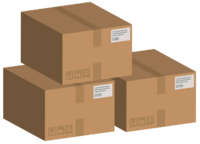

- C-TPAT
- Customs-Trade Partnership Against Terrorism is a program in which member carriers and importers agree to implement high security standards in exchange for being recognized by the CBP as low risk, which in the case of carriers can entail fewer CBP inspections. Carriers that are C-TPAT approved are automatically enrolled in the FAST program.
- Canada Customs Invoice (CCI)
- A Canada Customs Invoice or CCI is a CBSA document showing all the data elements required at time of release.
- Cargo Control Number
- A Cargo Control Number, often abbreviated as CCN, is a unique number assigned to a shipment of goods entering Canada. It serves as a means of telling shipments apart for CBSA, while simultaneously identifying the carrier transporting the goods. Cargo control numbers are mandatory for almost every type of shipment being transported to Canada by highway carrier.
- Cargo Exemption
- A cargo exemption in ACI is used to indicate that there is Exempt Cargo such as LVS (Low Value Courier), Flying Truck, IIT and Mail loaded on the truck or trailer(s). For any of these shipment types no shipment is required to be reported on the manifest, but the Cargo Exemption must be set here to indicate that it is aboard In BorderConnect click the link 'set cargo exemption' to select a cargo exemption. Once the selection is made the Cargo Exemption will be set. It can be removed again by clicking the 'Remove Cargo Exemption Code' link that will be displayed afterward.
- Carnet
- An ATA Carnet is an international customs document that allows for the temporary importation of goods into a Canada and the U.S.
- Carrier
- A registered company or owner operator licensed to transport goods via highway method.
- Carrier Code
- A Highway Carrier Code is a unique 4 character code used by CBSA to identify a carrier.
- CBP
- U.S. Customs and Border Protection (CBP) is the federal law enforcement agency responsible for customs services in the United States.
- CBSA
- The Canada Border Services Agency (CBSA) is the federal law enforcement agency responsible for customs services in Canada.
- CDL
- A Commercial Drivers License (CDL) is a license which authorizes an individual to operate commercial motor vehicles and buses over 26,000 pounds gross vehicle weight.
- CDRP
- The Commercial Driver Registration Program (CDRP) makes it easier for commercial highway carriers to pass through customs into Canada from the U.S. This program offers efficient and effective clearance to low-risk goods and pre-approved importers, carriers and commercial drivers.
- Certificate of Origin
- A Certificate of Origin (CO) document is a specific form identifying the goods, in which the authority or body empowered to issue it certifies expressly that the goods to which the certificate relates originate in a specific country. This certificate may also include a declaration by the manufacturer, producer, supplier, exporter or other competent person.
- CFIA
- The Canadian Food Inspection Agency (CFIA) is a regulating agency dedicated to protecting Canadians from preventable health risks related to food and zoonotic diseases. When carriers arrive at the port of entry, they may be subject to inspection if carrying food or other biological cargo.
- Change Trip
- Transmits a change request for the manifest to CBSA. Used in BorderConnect if the user wants to change ETA, port, truck, trailer, or other conveyance (trip) data.
- Change Shipment
- Transmits a change request for the shipment(s) to CBSA. Used in BorderConnect if the user wants to change ETA, port, shipper, consignee, commodity, or other shipment data.
- Chassis
- the framework of a commercial vehicle to which the engine and transmission, cab, fuel tanks, axles and cargo compartments are fixed.
- Citizenship
- Used to indicate where a driver or passenger is recognized under the custom or law as being a legal member of a sovereign state.
- City of Acceptance
- Used to indicate the city where the goods began a continuous journey to Canada. Must only be completed if the goods where taken over at a different location than the Shipper's address. e.g. the goods were picked up at a terminal instead of at the Shipper's facility.
- City of Loading
- Used to indicate the city the goods were shipped from. Should match the city listed under the Shipper's address on the paperwork.
- Commercial Invoice
- A bill of sale or other acceptable documentation that provides data elements required at time of import (i.e. value, quantity, vendor, etc.).
- Commodity
- Indicates the goods loaded on the truck or trailer.
- Consignee
- In a contract of carriage, the consignee is the entity who is financially responsible (the buyer) for the receipt of a shipment. Generally, but not always, the consignee is the same as the receiver.
- Consolidated Freight
- A number of separate shipments grouped together by a consolidator or freight forwarder and shipped under one cargo control document, in which case CBSA would expect deconsolidated details on house bills after the shipment has moved in bond.
- Container
- A standard-sized rectangular box used to transport freight by ship, rail and highway.
- Conveyance Reference Number
- Unique reference number or 'trip number' given by the carrier to a manifest. Consists of a carrier's CBSA-assigned Carrier Code, followed by a unique number assigned by the carrier. Must not be identical to a PARS number or other Cargo Control Number.
- Courier LVS
- A Courier Low Value Shipment (LVS) is a special shipment that clears as a cargo exemption and only available to couriers transporting low value shipments into Canada.
- CSA
- Customs Self Assessment (CSA), is a Canadian Shipment Type for goods to clear through CBSA. It allows for the clearance of goods imported by a CSA Approved importer and transported by a CSA Approved carrier.
- CSA Importer
- CSA Importers can use their own business systems and processes, which must meet the CBSA's requirements, to forward trade data and to report and remit payment of taxes and duties once a month to their own financial institutions.
- CSA Importer Business Number
- This is a Canada Revenue Agency Number of the Customs Self-Assessment importer.
- Customs
- The Government Service which is responsible for the administration of Customs law and the collection of duties and taxes and which also has the responsibility for the application of other laws and regulations relating to the importation, exportation, movement or storage of goods.
- Customs Broker
- A customs broker is an agent that works to secure the customs release of goods that are crossing an international border. Their work, which is done on behalf of the importer of the goods, involves the preparation of formal entries for customs and other government agencies where applicable, as well as the calculation of duties and taxes.
- CVOR
- The Commercial Vehicle Operators Registration (CVOR) is the registration system for operators of commercial motor vehicles (trucks and buses) in the province of Ontario. It's the part of the Highway Traffic Act under which operators of these vehicles are identified. CVOR also allows the Ministry of Transportation of Ontario (MTO) to suspend or cancel an operator's certificate.
D
- Delivery Address
- In ACI, it is the address to which the goods are physically delivered, if different from the consignee.
- Department of Defense Shipment
- A U.S. Department of Defense (DOD) Shipment is a shipment of goods belonging or destined to the United States Department of Defense being transported by a commercial carrier. DOD shipments are entitled to special processing at the border when clearing through CBP and are not required to be entered in ACE and exempt from the regular list of shipment types.
- Double Drop
- Also known as Doubles is a combination vehicle consisting of one tractor and two trailers.
- DTOPS
- The Decal and Transponder Online Procurement System issues transponders and decals for carriers that cross into the U.S. CBP uses DTOPS information to verify commercial vehicles upon arrival.
E
- E29B
- An E29B is a Temporary Importation Bond and is a Canadian Shipment Type for goods to clear through CBSA. It allows for goods to enter Canada temporarily on a Form E29B - Temporary Admission Permit.
- EDI
- Electronic Data Exchange (EDI) is a system that allows clients to electronically transmit their import or export data and their accounting documents to the CBSA.
- eManifest
- eManifest modernizes and improves North American cross-border commercial processes. ACE and ACI eManifest are required by all carriers, freight forwarders and importers to send electronic information about their shipments electronically to the Canada Border Services Agency (CBSA) and U.S. Customs and Border Protection (CBP).
- ELD
- Short for an Electronic Logging Device, is an electronic device on a commercial vehicle that records information like its speed and the total time it has been driven in a particular period.
- Emergency Repairs
- Repairs resulting from an unforeseen contingency that occurred outside Canada and were necessary to enable the safe return of the conveyance to Canada. To learn more visit Emergency Repairs (CBSA Cargo Exemption)
- Entry Number
- A unique number referencing your commercial shipment from a customs broker for shipments going into the U.S.
- ETA
- Estimated time of arrival.
F
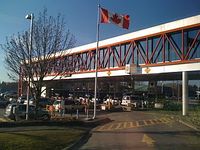
- FAST
- The Free and Secure Trade (FAST) program is a commercial clearance program for known low-risk shipments entering the United States from Canada and Mexico. This program allows expedited processing for commercial carriers who have completed background checks and fulfill certain eligibility requirements.
- FAST ID
- A unique 14 digit number given to drivers who are FAST approved.
- First Canadian Port of Entry
- The First Canadian Port of Entry is the location where the driver will be entering Canada. In BorderConnect you can type either the city name or the Port Code, it should come up to be selected. In most cases is also possible to type the name of the city or port on the American side of the border to bring up the corresponding Canadian Port of Entry.
- Flatbed
- an open trailer used for hauling freight that doesn’t require a dry van or reefer trailer. Flatbed trucking hauls freight such as lumber, masonry products, equipment, cars, and steel coils.
- Flying Truck
- A Flying Truck is a Canadian Shipment Type for goods to clear through CBSA and is considered a cargo exemption in ACI. It allows for the release of shipments arriving at the border by highway carrier that were originally supposed to arrive by air and have been already been declared on an ACI eManifest for the air mode of transportation.
- FMCSA
- the Federal Motor Carrier Safety Administration (FMCSA) is an agency with the US Department of Transportation that regulates the trucking industry. Its main mission is to improve highway safety and reduce fatalities in accidents involving commercial vehicles.
- Free of Duty
- A Free of Duty Shipment, known for its corresponding form, CBP Form 7523, is a U.S. Shipment Type for goods to clear through US Customs and Border Protection. It is a type of Informal Entry that allows for the release at the border of shipments consisting of merchandise that is unconditionally or conditionally duty free and not exceeding 2500 USD in value.
- Freight Forwarder
- A Freight Forwarder is a person or business entity that specializes in coordinating shipments between shippers, carriers and consignees. Since freight forwarders don’t have their own equipment, they contract with carriers to move goods.
G
- Goods Astray
- A Goods Astray is used for the return to the U.S. of refused or undeliverable shipments or goods brought into Canada accidentally.
H
- Hazmat Code
- A four digit number indicating a dangerous good is any solid, liquid or gas that can harm people, other living organisms, property, or the environment. An equivalent term, used almost exclusively in the United States.
- Highway Carrier Code
- This four-character identifier, assigned by the Canadian Border Services Agency (CBSA), is required for your shipments are cleared seamlessly by a customs broker. It's required for filing an ACI eManifest, using PARS barcode labels, and hauling commercial goods into Canada.
- HS Code
- An HS Code or HTS is the Harmonized Commodity Description and Coding System generally referred to as "Harmonized System" or simply "HS" is a multipurpose international product nomenclature developed by the World Customs Organization (WCO).
I


- IIT (United States)
- In the US, Instruments of International Traffic (IIT) or 10.41a, is a U.S. Shipment Type for goods to clear through CBP. It allows for the release at the border of shipments consisting of skids, containers and similar articles.
- IIT (Canada)
- Instruments of International Trade (IIT), is a Canadian Shipment Type for goods to clear through CBSA. It allows for the release of shipments consisting of empty cargo containers, reusable skids, drums, pallets, straps and similar goods used in the international commercial transportation of goods.
- Importer CSA Business Number
- This is a Canada Revenue Agency Number of the Customs Self-Assessment importer. Used to indicate the importer's business number to Customs. Only appears when Shipment Type is CSA.
- In-Bond (United States)
- An In Bond is a U.S. Shipment Type for goods to clear through CBP. It allows for the inland movement of goods that have not been Customs released. An In Bond Shipment is required for cargo to move to an inland port to be Customs released, or to transit (pass through) the U.S. destined to another country, or to be immediately exported.
- In-Bond (Canada)
- An In-Bond is a Canadian Shipment Type for goods to clear through CBSA. It allows for the inland movement of goods that have not yet obtained Customs release.
- In-Transit
- An In Transit Manifest controls the movement of goods moving from point to point in the US by transiting Canada, or point to point in Canada after transiting the US.
- Insurance Policy
- Required when submitting eManifest data that includes hazardous goods. In BorderConnect the user will need to add a new insurance policy to the company profile. Clicking on this button will bring the user to a page where the insurance information can be entered. Once finished, clicking Save will add the insurance policy and return the user to the Company Details Page.
- Informal Entry
- Informal entry refers to a simplified import entry procedure accepted at the option of customs for any baggage or commercial shipment that does not exceed a specified value. Generally, informal entry procedures may be used for shipments not exceeding $2,000 in value which are imported by express consignment operators and carriers.
- Intangibles
- Intangibles is a U.S. Shipment Type for goods through U.S. Customs and Border Protection. It is a type of Informal Entry that allows for the release at the border of shipments consisting of specific types of commodities.
- Intermodal Transportation
- shipping that utilizes more than one form of transportation including truck, rail, ship and air. Domestic intermodal truckload transportation generally uses a combination of truck and train.
- International Mail
- International Mail is a U.S. Shipment Type for goods to clear through US Customs and Border Protection. It allows for the release of mail moving via a contract carrier from a foreign postal service to the US Postal Service.
L
- LTL
- stands for Less-Than-Truckload. LTL freight consists of small shipments from multiple customers that are consolidated before being transported.
- LVS
- The Low Value Shipment (LVS) Program streamlines the reporting, release and accounting procedures of certain goods imported by courier.
M
- MC Number
- An MC number (Motor Carrier number) is an interstate operating authority and unique identifier assigned by the FMCSA to moving companies operating in interstate commerce – in other words, hauling cargo across state lines.
- Motor Carrier
- a private or for-hire commercial vehicle or transportation business that hauls passengers and/or freight.
N
- NAFTA
- The North American Free Trade Agreement (NAFTA) is a trilateral agreement signed by Canada, the United States, and Mexico that facilitates free trade.
- NEXUS
- The Nexus program is designed to expedite the border clearance process for low-risk, pre-approved travelers into Canada and the United States.
- NMFTA
- The National Motor Freight Traffic Association (NMFTA) assigns and publishes the Standard Carrier Alpha Code (SCAC), a two to four-letter code used to identify highway carriers.
O
- Orders In Council
- An Orders in Council Shipment (OIC) is a Canadian Shipment Type for goods to clear through CBSA. It allows for the release of goods exempted from regular clearance processes by an Order in Council.
- Owner Operator
- A truck driver who owns their own truck. Owner operators may operate under their own authority or the authority of the carrier to which they’re leased.
P
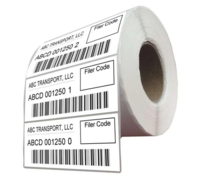

- Pallet
- A device on the deck of which a quantity of goods can be assembled to form a unit load for the purpose of transporting it, or of handling or stacking it with the assistance of mechanical appliances. This device is made up of two decks separated by bearers, or of a single deck supported by feet; its overall height is reduced to the minimum compatible with handling by fork lift trucks or pallet trucks; it may or may not have a superstructure.
- PAPS
- Pre-Arrival Processing System (PAPS) is a U.S. shipment release type, and is designed to expedite the release of commercial shipments while still processing each shipment through CBP's automated risking systems.
- PARS
- Pre-arrival Review System (PARS) is a Canadian shipment release type, and is designed to speed up the release or referral for examination process when the goods arrive in Canada by allowing Customs to review the broker's entry electronically prior to arrival.
- Personal Effects
- All articles (new or used) which a traveller may reasonably require for his or her personal use during the journey, taking into account all the circumstances of the journey, but excluding any goods imported or exported for commercial purposes.
- Personal Goods
- Personal Goods, aka Casual Goods, is a Canadian Shipment Type for goods to clear through CBSA. It allows for the release of shipments consisting of non-commercial goods being transported by a highway carrier.
- Personal Shipment
- A Personal Shipment, aka Household Goods or Unaccompanied Articles, is a U.S. Shipment Type for goods to clear through US Customs and Border Protection.
- PIP
- Partners in Protection (PIP) is a cooperative program between private industry and the CBSA aimed at enhancing border and trade chain security.
- Port Code
- A unique four digit code associated to the corresponding first Canadian port of entry and/or the United States port of arrival.
- Port of Entry
- The first Canadian port of entry, and where the goods will be first entering the Canada.
- Postal Shipment
- A Postal Shipment is a Canadian Shipment Type for goods to clear through the Canada Border Services Agency. It allows for the release of mail moving via a contract carrier from a foreign postal service to Canada Post.
- Proof of Delivery (POD)
- Paperwork that confirms the delivery of a load. Usually includes a date and time stamp and a legible name or signature of the person who accepted it.
- Province of Loading
- Used to indicate the province the goods were shipped from. Should match the province listed under the Shipper's address on the paperwork. In BorderConnect the province of loading will default to the last one used on an ACE shipment, and can be changed using the drop down menu.
Q
- QP In-Bond
- A QP In-Bond is when a Customs Broker or other approved ABI filer submits the bond on behalf of the carrier. In this case the bond can be reported on the ACE eManifest simply by creating a PAPS shipment or QP In-Bond.
- Quick Assign
- This feature in BorderConnect allows users to easily select data that already exists in BorderConnect. It works by suggesting results based on partially keyed information. For example typing 'da' under Quick Assign Driver would suggest a driver named 'Daniel' if they already exist in the system.
R
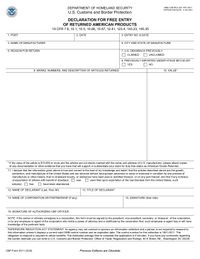
- Reefer Trailer
- Short for Refrigerated Trailer. A closed insulated trailers that regulate temperature and humidity for sensitive products like frozen foods, fresh produce, and artwork.
- Release Office
- This is where the shipment will be released by CBSA. For all shipment types except In-Bond, this is the First Canadian Port of Entry. For In-bond shipments it should be the CBSA Office responsible for the bonded warehouse the shipment will move in bond to.
- Released
- Shipment status that indicates its goods have cleared customs and are approved to enter the economy.
- Returned American Products
- A Returned American Products Shipment are goods that must have either been rejected or returned by the foreign purchaser to the United States for credit, and must not have been allowed Customs drawback or exemption from internal revenue tax when they were exported, or be otherwise subject to duty.
- RMD
- Release on Minimum Documentation or a Paper RMD is a service option that allows for the release of commercial goods already in Canada. Most commonly used to release goods that have entered a bonded warehouse, it is also used for goods at the border when there is an exemption to mandatory PARS clearance.
- RNS
- The Release Notification System (RNS) is a means of verifying whether customs clearance has taken place prior to arrival in Canada. RNS affords many advantages by offering carriers a complete overview of the activity on their carrier code as reported directly by CBSA.
S


- SCAC
- A Standard Carrier Alpha Code (SCAC) is a unique 4 letter code used to identify transportation companies. A SCAC is required for all carriers doing business with a U.S. Goverment agency. As such, all carriers crossing the border into the United States are required to have a SCAC in order to identify themselves to CBP.
- Seal Number
- A metal or plastic lock for cargo trailers and trucks to secure the cargo from tampering.
- Section 321
- A Section 321, also known as "De Minimis", is a U.S. Shipment Type for goods to clear through U.S. Customs and Border Protection. It is a type of Informal Entry that allows for the release at the border of shipments valued at 800 U.S. dollars or less.
- Shipment Control Number
- A Shipment Control Number, often abbreviated as SCN, is a unique number assigned to a shipment of goods entering the United States. It serves as a means of telling shipments apart for CBP, while simultaneously identifying the carrier transporting the goods.
- Shipment Type
- A Shipment Type, aka clearance type or release option, is the method by which goods being transported by a highway carrier obtain Customs' permission to enter the country.
- Shipper
- A person, company or entity that is shown in all the shipping documents (bill of lading, commercial invoice, packing list) as the party responsible for procuring and/or placing the order for shipment and where the shipment is originating from.
- Skid
- Another term for a pallet, on which freight is stacked before being loaded onto a truck or trailer.
- Surety
- A natural or legal person (generally a bank or insurance company) who accepts responsibility in due legal form for the financial consequences of non-fulfilment of another's obligations to the Customs.
- Surety Bond
- A guarantee in which a party agrees to assume responsibility for a debt or obligation if a borrower defaults or fails to meet certain predetermined criteria.
- Status Query
- BorderConnect's status query feature sends a request for updates for the status of a particular shipment with CBSA using RNS.
- Straight Truck
- A Vehicle which carries cargo in a body mounted to its chassis, rather than on a trailer towed by a vehicle.
- Sub Location
- A Sublocation is a code for a CBSA approved warehouse facility where a specific cargo report will be acquitted and the goods will be authorized to deliver. In BorderConnect the sublocation code is mandatory for In Bond shipments into Canada, as it tells CBSA exactly where the goods will be bonded to while they await release.
- Sufferance Warehouse
- Sufferance warehouses are licensed by the CBSA for the short-term storage and examination, when required, of imported goods not yet released by the CBSA. Only imported goods for which financial security have been posted are eligible to be stored in these facilities.
T
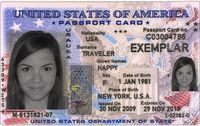
- Tanker
- a closed, baffled trailer used to haul dry or wet bulk commodities like flour, dry concrete mix, gasoline and cooking oil.
- Team Driver
- a common trucking term when two drivers operate one commercial vehicle. One driver is usually sleeping or off-duty while the other is driving.
- Temporary Importation
- Goods imported under authorization by the CBSA for a limited period of time and specified use.
- Terminal
- Terminals are company office locations and used in BorderConnect to help sort user accounts, driver profiles and truck profiles for companies that are accounting for multiple locations. User accounts that are assigned to a terminal will view times in BorderConnect according to the time zone set for that terminal.
- Tractor Trailer
- A Tractor and semitrailer combination.
- Transaction Number
- A unique number referencing your commercial shipment from a customs broker for shipments going into the Canada.
- Travel Document
- Travel Documents are documents required by the driver when crossing into the U.S. and Canada. In BorderConnect they are only required if the Driver Profile will be used on ACE eManifests, and the driver does not have a FAST Card. The user will be required to enter two Travel Documents including one Commercial Driver's License and one other Travel Document.
- Trip Number
- Unique number used by customs to identify an eManifest. The trip number always begins with a SCAC (for ACE) or carrier code (for ACI), which can be selected using the drop down menu. This must be followed by 4 to 21 characters (numbers or letters) which can be entered in the text field. The trip number must be unique.
U
- UN Code
- A four digit number indicating a dangerous good is any solid, liquid or gas that can harm people, other living organisms, property, or the environment. An equivalent term, used almost exclusively in the United States.
- USDOT
- The U.S. Department of Transportation requires companies that operate commercial vehicles to have a USDOT Number. The USDOT Number serves as a unique identifier when collecting and monitoring a company's safety information acquired during audits, compliance reviews, crash investigations, and inspections.
V
- VIN
- The vehicle identification number of the vehicle. In BorderConnect it should be entered in full with an ACE eManifest. Partial VINs are not considered acceptable.
W
- WACM
- A Warehouse Arrival Certification Message (WACM) needs to be electronically transmitted to CBSA when unreleased shipments arrive at a sufferance warehouse in Canada, warehouses will need to send an arrival message for each cargo control number corresponding to each of the shipments.
- Waybill
- a document issued by a carrier that lists important details and instructions pertaining to a particular shipment.
- WHTI
- The Western Hemisphere Travel Initiative (WHTI) is a U.S. law that requires all travelers, including U.S. and Canadian citizens, to present a valid passport or other approved secure document when entering the United States from within the western hemisphere.
